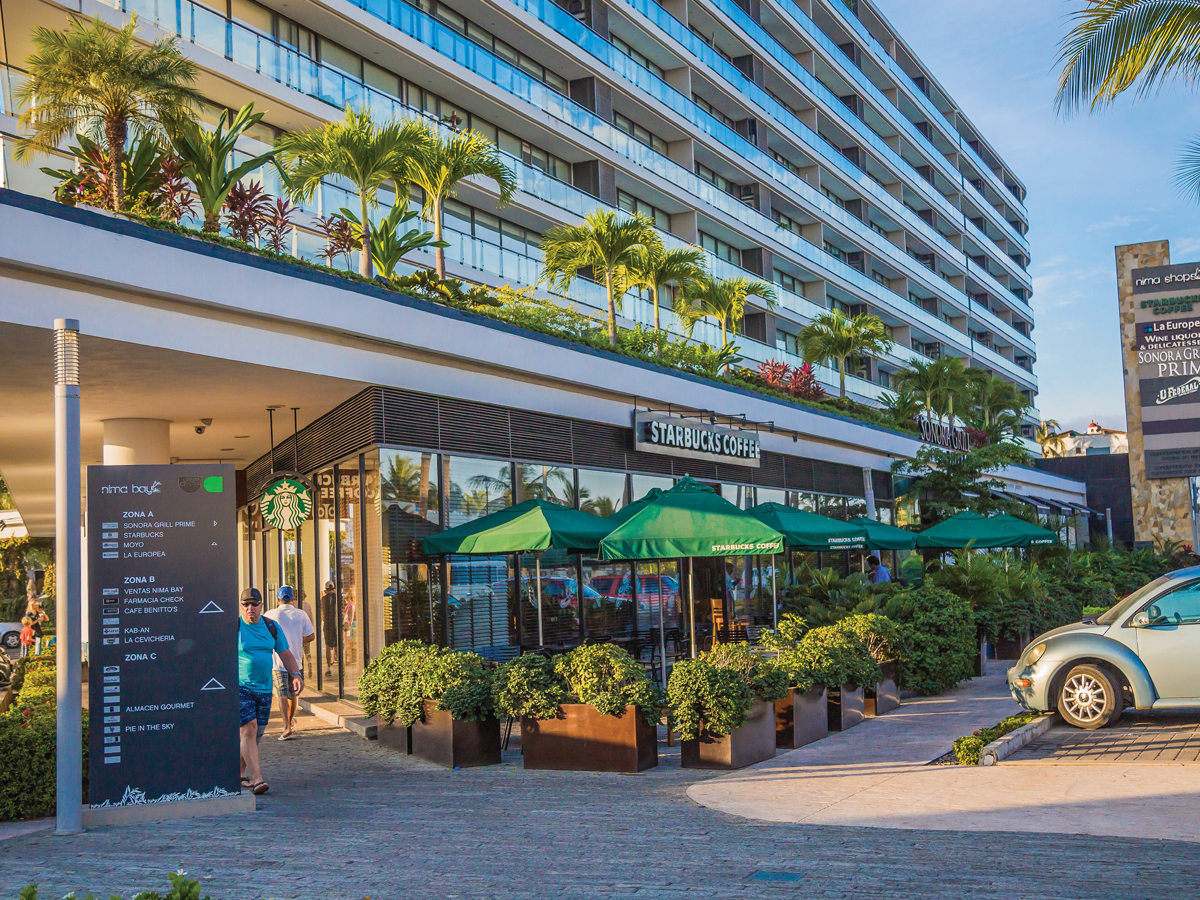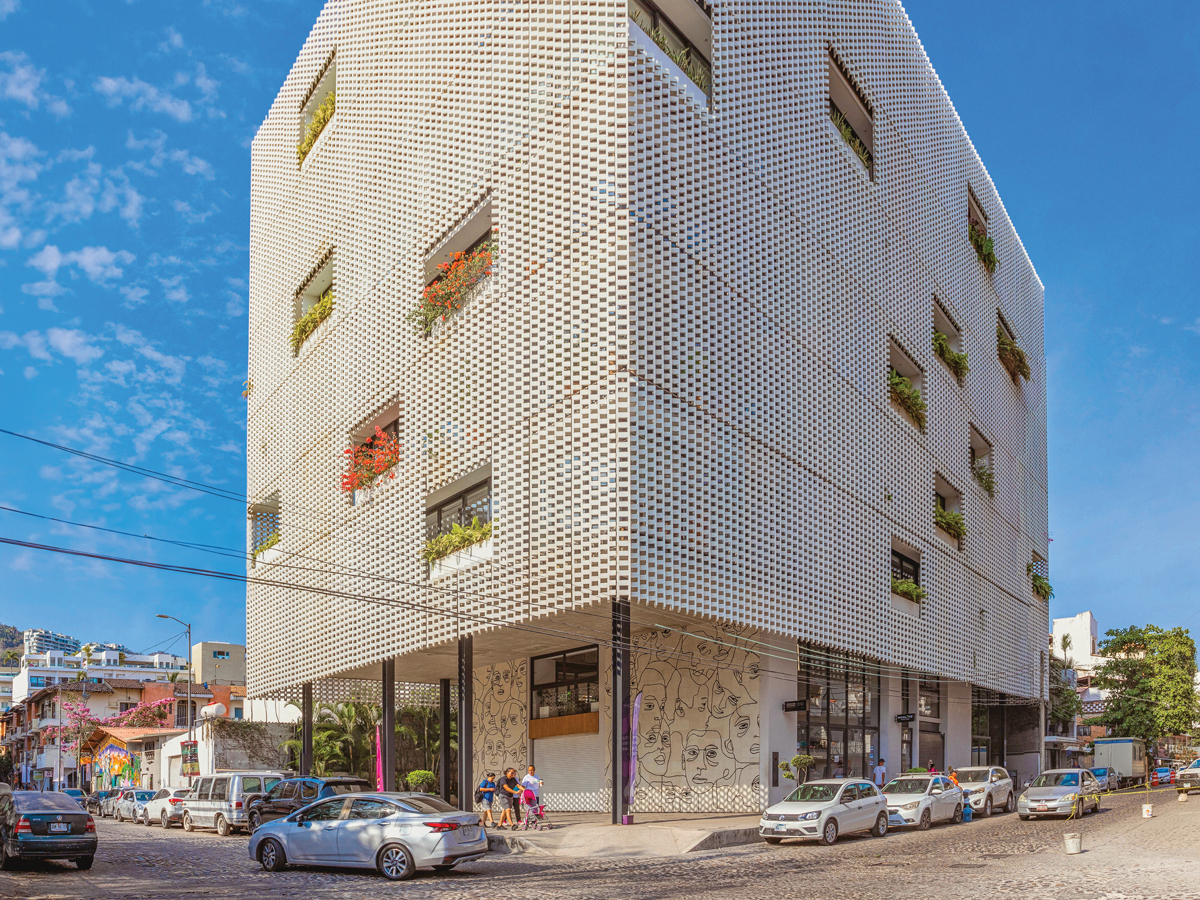Mixed-Use Developments in Vallarta · Nayarit
In recent years, the urban skyline of Puerto Vallarta and Riviera Nayarit has been noticeably transforming—not just due to the proliferation of new residential developments, but also because of the growing number of projects that combine multiple uses within a single architectural proposal. Beyond their contemporary aesthetics, these projects offer a comprehensive solution to the new dynamics of living, working, and consumption that have taken root among both residents and frequent visitors to this ever-growing destination.

A SOLUTION FOR MODERN LIVING
The increasing demand for versatile spaces has paved the way for real estate proposals that combine residential, commercial, tourism, and corporate functions within the same structure or complex. This integration reflects a shift in user habits, where people now value the ability to meet multiple needs within a single environment—from living and working to shopping, exercising, or socializing—all without long commutes or dependence on a car.
This typology is particularly well-suited to destinations like Puerto Vallarta and Riviera Nayarit, where dynamic local communities and national and international visitors converge, all seeking practical and connected experiences.
ADVANTAGES OVER SINGLE-USE DEVELOPMENTS
One of the main benefits of mixed-use developments is their ability to create more active and safer environments. By bringing together different urban functions, these projects encourage constant activity throughout the day, reducing “dead zones” and fostering natural surveillance. In addition, they diversify sources of income and employment, optimize existing infrastructure, and promote a stronger sense of community.
From an urban planning perspective, they also offer an alternative to disorderly horizontal sprawl by advocating for a more compact, sustainable, and efficient land-use model.
STRIVING FOR THE RIGHT MIX
Designing this type of project involves finding the right balance between various uses. This decision cannot be taken lightly—it must be based on market studies, mobility analyses, observations of the immediate surroundings, and population density projections.
The ratio between residential, commercial, and service components can vary greatly depending on location, accessibility, and the socioeconomic profile of future users. For example, in areas near major roads or tourist hubs, commercial spaces tend to carry more weight. In contrast, in established residential communities, housing takes center stage and is complemented by basic or specialized services.
THE STRATEGIC IMPORTANCE OF LOCATION
The land’s potential and its surrounding context are crucial when envisioning a mixed-use development. Factors such as road connectivity, proximity to urban services, pedestrian or vehicular traffic, and even the sense of belonging all play a key role in determining not just whether a mixed-use project is viable, but what combination of elements will make it successful.
In Vallarta · Nayarit, areas like Fluvial Vallarta, Marina Vallarta, Nuevo Vallarta, and the vicinity of Federal Highway 200 have proven favorable for this type of project, thanks to their infrastructure, commercial dynamism, and high property value.
FACTORS CONTRIBUTING TO SUCCESS
The commercial success of a mixed-use development depends on more than just its design or location. Curating the types of commercial tenants, ensuring high-quality architectural design, providing professional project management, and fostering community integration are all decisive factors. Creating a well-rounded experience for residents, visitors, and business owners is what determines whether a project will be well received and sustainable over time.

HIGHER INVESTMENT, HIGHER RETURNS
One of the clearest advantages for developers and investors is that mixed-use projects offer multiple avenues for profitability. In addition to selling or leasing residential units, commercial spaces, offices, or medical suites provide diversified income streams that help mitigate risks and maintain economic flow—even during downturns.
In tourism-driven markets like Vallarta · Nayarit, this diversification also enhances resilience against seasonal fluctuations, as each segment of the project caters to different market needs throughout the year.
FUTURE TRENDS
Market acceptance of these developments has grown significantly. Today, they are seen as a logical evolution of modern urbanism. In the medium term, we can expect the integration of themed components such as wellness, health, art, and technology.
Projects will also trend toward greater sustainability and social integration, with stricter standards for energy efficiency, waste management, and social responsibility.



